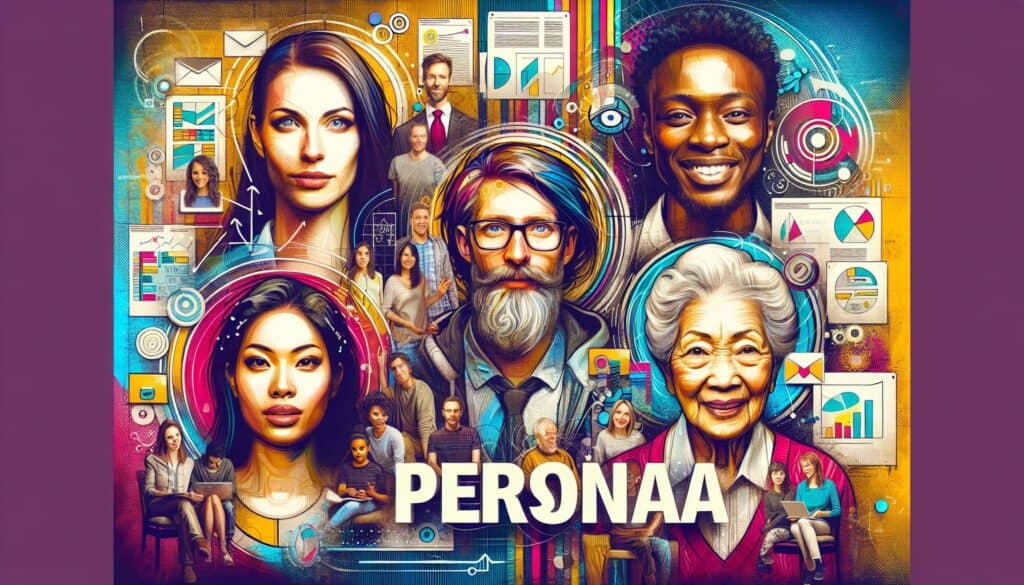在用户研究的基础上,为目标用户类型创建丰富的虚构表象,帮助设计团队与真实用户产生共鸣,并为他们进行设计。
- 方法: 客户与营销, 构思, 产品设计
角色

角色
- 客户旅程制图, 设计过程, 设计思维, Human-Centered Design, 交互设计, 原型设计, 用户体验(UX), 以使用者為中心的設計
目标
如何使用
- 角色 它们包括姓名、照片、人口统计数据、目标、需求、动机、痛点和相关行为。在整个设计过程中,这些信息都会被用作参考点。
优点
- Fosters empathy and 以用户为中心 design, helps create focus and alignment within the team, aids in decision-making and feature prioritization, improves communication about users.
缺点
- 如果研究不充分,可能会基于刻板印象;如果缺乏多样性,可能无法代表所有用户;如果不定期更新,可能会过时;设计团队有可能将其视为真实的个体,而缺乏灵活性。
类别
- 客户与营销, 人体工程学, 构思, 产品设计
最适合:
- 通过将特定用户原型的需求、目标和行为放在流程的最前沿来指导设计和开发决策。
Personas serve as vital tools across various stages of the product design process, particularly in industries like software development, consumer electronics, healthcare, and automotive, where understanding user needs is fundamental for innovation. During the research phase, development teams initiate persona creation through qualitative and quantitative research methods, gathering data from real users through in-depth interviews and contextual inquiries. This data becomes aggregated into distinct archetypes representing segments of the user base, ensuring that design and engineering efforts align with actual user behaviors and expectations. Teams often employ these personas in brainstorming sessions, ensuring that discussions remain centered around user-centered principles while informing feature selection and design enhancements that resonate with target audiences. Regular workshops involving cross-disciplinary team members, such as designers, engineers, marketing specialists, and stakeholders, help maintain alignment on user goals and pain points, fostering an environment where every decision is informed by a deep understanding of the user. Additionally, personas are beneficial for creating user stories, enhancing communication across teams by providing a tangible reference that conveys user motivations and challenges, thus breaking down silos that often exist in organizational structures. Well-developed personas can also be instrumental in usability testing scenarios, enabling teams to validate design assumptions and optimize the user experience based on concrete user feedback. Integrating persona-driven methodologies throughout the product lifecycle enhances the ability to innovate continuously while remaining responsive to evolving user needs and expectations.
该方法的关键步骤
- Analyze user research data to identify patterns and trends.
- Segment users into distinct groups based on shared characteristics.
- Create detailed profiles for each persona, including name, photo, demographics, and background.
- Define specific goals and needs for each persona.
- Identify motivations and pain points relevant to each persona.
- Outline relevant behaviors and preferences of each persona.
- Share the personas with the team to guide the design process.
- Reference personas during design and development to ensure user focus.
- Iterate and refine personas based on new user feedback and insights.
专业提示
- Incorporate iterative feedback loops by continuously revisiting personas as user research evolves throughout the product lifecycle.
- Utilize quantitative analysis alongside qualitative data when refining personas, ensuring they accurately reflect user behavior trends.
- Employ scenarios that depict personas in realistic contexts to enhance team understanding of user interactions with the product.
历史背景
1986
(如果日期不详或不相关,例如 "流体力学",则对其显著出现的时间作了四舍五入的估计)。

相关文章
肌肉骨骼不适调查表
多变量测试(MVT)
多元回归分析
动作捕捉系统
MoSCoW 方法
情绪中值测试